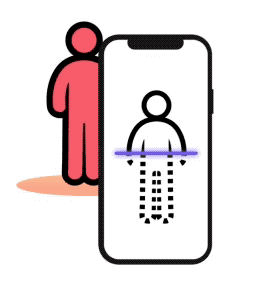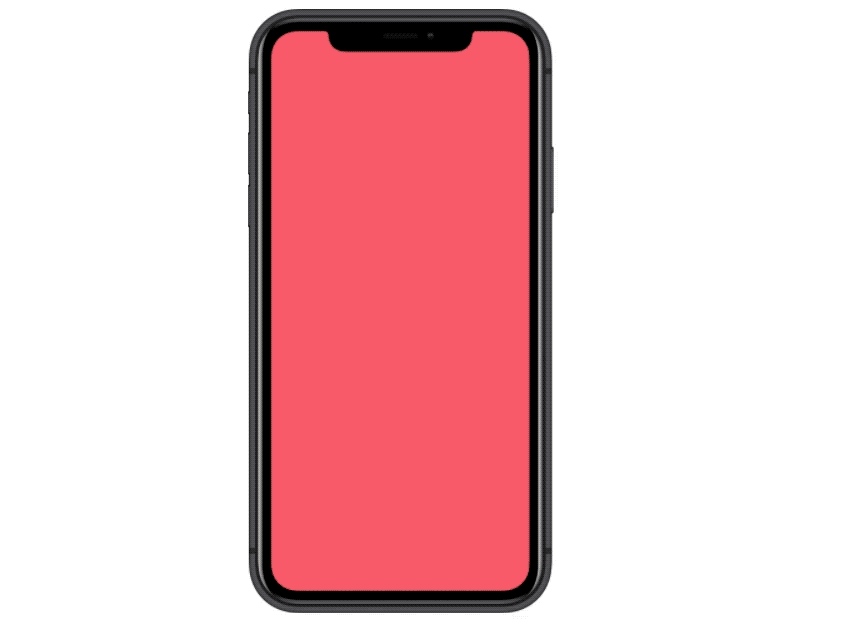weAR
An end-to-end UX research for an app design enhancing an online shopping experience
‘weAR’ is an iOS application for mobile aiming for better and easier online shopping experiences by detecting customers’ body measurements with calibrated augmented reality (AR) technology. This app will allow customers to know how the clothings will fit onto their body with just a simple scan of their body, which provides them more convenient online shopping experience.
Role
UX Researcher
+ UX/UI Designer
+ Animator
Timeline
August 2020 - May 2021
Softwares
Adobe Photoshop
+ Adobe Illustrator
+ Sketch + Figma
+ Tumult Hype (Animation)
💡 The challenge
Online shopping is the most easiest and convenient way to shop nowadays. Shoppers often go through dilemmas about which sizes to order since they are not able to try them on. Also, the sizes of clothings varies depending on the brand or materials.
So how might we enhance the online shopping experience?
👔 Business approach
The main business approach with this application is to minimize the costs of returns due to poor and wrong fittings. Another aim through this app towards businesses are to increase sales by providing easier purchasing method for shoppers and to lessen the amount of shopping carts shoppers abandon while online shopping.
🔍 Goals
Design an iOS app that allows the users to have their body calibrated measured by augmented reality (AR) technology with just a scan of themselves through the app and give more control over determining clothing sizes when online shopping. Also to define the brand’s visual identity.
👩🏻💻 My role
I worked as a solo UX Researcher + UX/UI Designer with the guidance of my mentor Tim Frank.
As a UX Researcher, I am given the task to hold multiple interviews on behaviors towards online shopping and usage of AR technology to research how my app will become useful towards users.
As a UX/UI Designer, I am given the task of designing the visuals of the app. From branding to wireframes to illustrations that help the user have a delightful experience.
✏️ Quantitative Research
For a quantitative research, I sent out quick and anonymous 10 questions survey to 120 users to find out general insights towards their shopping experiences.
Objective
To find out users’ general attitudes towards shopping such as their preferences on in-store or online shopping or if the COVID-19 pandemic affected their shopping method
To find out general informations on how the user feels about determining clothing sizes when they online shop
To find out how the user feels towards returning a product and abandoning shopping carts before the last step of the checkout process
Hypothesis
Most users prefer online shopping rather than shopping physically in-store
Users go through a difficult process of figuring out their clothing sizes through online shopping
Users prefer not to make returns since it could be a hassle for them
Not knowing the exact size makes the user abandon their shopping cart
Let’s see what I found out… 🤔
👏🏼 Through this quantitative research, I found out…
Most users enjoy online shopping and the COVID-19 pandemic has affected their shopping method
Users have a hard time determining their sizes through online, but willing to purchase without trying them on
When it comes to returning their purchases, most users consider it as a hassle but still willing to make returns if the sizes did not work for them
Users mostly abandon their shopping carts due to unable to determine their sizes
✅ Was my hypothesis correct?
👍 Most users prefer online shopping rather than shopping physically in-store
👍 Users go through a difficult process of figuring out their clothing sizes through online shopping
👎 Users prefer not to make returns since it could be a hassle for them
👍 Not knowing the exact size makes the user abandon their shopping cart

🎯 Pre-Interview User Persona Hypothesis
Users are online normal shoppers that loves shopping and they are mostly female
Students are the main occupation of the users
Users are familiar with AR technology and think the technology is both realistic and not realistic
Users are mostly tech-savvy or normal tech users
👪 Personas
Users whose goals and characteristics represent the main needs of a larger group of users for weAR.
💬 Qualitative Research
For a qualitative research, I decided to interview 10 different users with 5 learning objectives that are based on shopping and technology general insights.
🛍️ Objective 01
“Do people prefer online or physical shopping?”
Hypothesis:
There is an increase in online shopping due to the pandemic
People prefer shopping in person because they can physically see how the clothing fits, but due to the pandemic people are using online shopping more often
Hypothesis was correct:
90% of the users enjoyed shopping
75% of the users enjoyed online shopping method
💸 Objective 02
“Why do people make returns?”
Hypothesis:
People who return items are returning them because of purchasing the wrong size
Hypothesis was correct:
Most users chose “wrong size” as one of their top 3 reasons of returning choices
🛒 Objective 03
“Why do people abandon shopping carts or leave the cart without purchasing at the checkout?”
Hypothesis:
They're not sure of the size indicated will fit them
Unsure of their sizings
To double check the sizing later and forgets
Hypothesis was incorrect:
Most users abandon shopping carts due to wanting to rethink about the product
👀 Objective 04
“Do people use visualization app/technology for pre-purchase decision?”
Hypothesis:
People are willing to use the visualization app/technology before making purchasing decision and it motivates them to make a purchase
Hypothesis was correct:
Users agreed that the visualization app/technology is realistic
Users agreed that the visualization app/technology is enough to motivate them to purchase the products
Examples of visualization app/technology users were provided with
📱 Objective 05
“Do people use face filter technology on social media?”
Hypothesis:
People use face filters on social media to try out difference variations of style for themselves
Hypothesis was correct:
Most used filters by the users were ‘photo filters’ and ‘beauty/make up filters’ which are considered as style filters
Now, let’s see if I targeted the right users… 🤔
🎯 In-Focus User Wheel
Pre-Interview
Post-Interview
✅ Was my pre-interview in-focus user assumption correct?
👍 Users are online normal shoppers that loves shopping and they are mostly female
👎 Students are the main occupation of the users
🤔 Users are familiar with AR technology and think the technology is both realistic and not realistic
👍 Users are mostly tech savvy or normal tech users
🧠 What I’ve learned…
01
There has been an increase number of online shoppers
Due to the COVID-19 pandemic, a lot of in-person shoppers changed their shopping preferences to online shopping and realized how convenient it is to shop online. Numerous of shoppers have mentioned they enjoyed going into the store physically, but due to the pandemic they stopped going out. However, they were able to realize how easy and fast it is to shop online.
02
Some shoppers are lazy to make returns
Some shoppers determined that unless it is a very expensive item, they won’t return some items back to the store even when they purchase the wrong size. Some shoppers said they would either give it away to their friends or even customize the clothings.
03
Shoppers leave items in their shopping carts to re-think about the product
Shoppers put items in their shopping carts and abandon it before the checkout step due to the need of re-thinking of the products. They think twice about if they really need to purchase the product or if they could find a lower price at a different shopping website.
04
Shoppers are motivated by augmented reality (AR) technology to make a purchase
Shoppers had positive attitudes towards AR technology. They stated that they could make a purchase just by looking at the product virtually. However, large number of them also stated it depends on which product, but they are highly motivated by the AR technology to make a purchase.

🖍️ Branding
Visual designs such as logo, color study/palette, typeface and more that identifies and represents the brand of the app.
Color Study
App Map
Wireframing
Illustrations / Animations
📱 UX Visual Designs
Visual designs of the wireframes of the app by using the software, Sketch.
📲 Prototype Link





































































